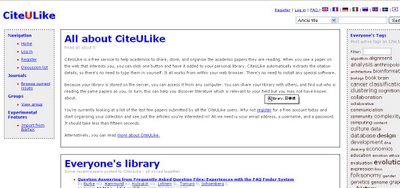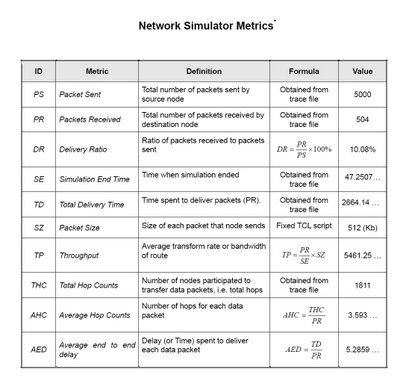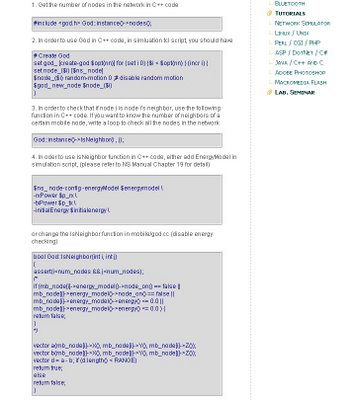Extracted from here
This is a short note on how to start defining your topic of interest and zooming in on specific research problems and challenges. This note is geared towards graduate (M.S. and Ph.D.) students interested in computer networks related topics for their directed research (DR), M.S. thesis, or Ph.D. dissertation. The general guidelines, however, may apply to a larger class of students (e.g., in Electrical Engineering or Computer Science disciplines):
[Note: This is only a starting point. There's a lot more to research than what's here!]
1. Pick a direction or area of interest based on your background in netwoking (e.g., courses you have taken, readings, conferences, talks to Professors, etc.). Try to be as specific as possible. For example, do not pick 'multicast' (it is too general), but perhaps 'congestion control for reliable multicast' or 'multicast routing in ad hoc networks'. Do not pick 'wireless networks' (too general), but perhaps 'systematic testing of wireless MAC layer' or 'efficient handoff for IP mobility', for instance. There could be a list of topics that interest you (related or unrelated). I do not recommend a list of more than three topics.
2. Compile a set of 'keywords' to start searching for high quality readings for each of the previously selected topics. Good places to start your search are IEEE library on-line and ACM library on-line (both of which are freely available to USC students). Pick one research topic at a time.
You can also search on the web (e.g., Google) but please double check the publication details for quality (there are a lot of papers out there!).
Another literature-rich scientific digital library is citeseer.com, but again, please double check details for quality.
3. Out of the search hits, select around 15-20 papers that you think are most related to what you had in mind and are of the highest quality. Do NOT read all these papers yet!
Check the title, abstract, names of authors, their affiliations, and most importantly the conference or journal. Many IEEE and ACM conferences/Journals are of high quality. Some, however, are more selective and competitive than others. Examples of well-known conferences/journals include, but are not limited to:
* In the general area of Computer Networks: IEEE/ACM Transactions on Networking (ToN), IEEE Journal on Selected Areas in Communications (JSAC), ACM SIGCOMM, IEEE INFOCOM, IEEE ICNP, IEEE SIGMetrics, Computer Networks Journal (Elsevier), IEEE ICC, IEEE GlobeCom, ACM CCR, among others.
* In the more specific areas of wireless networks (including mobile ad hoc networks, sensor networks and cellular-like infrastructure-based networks): ACM MobiCom, ACM MobiHoc, ACM MONET Journal, AdHoc Networks Journal (Elsevier), ACM Wireless Networks (WiNet) Journal, ACM SenSys, IEEE/ACM IPSN, IEEE WCNC, ACM MC2R, to name a few.
Some gathered statistics about conference/workshop acceptance rates can be found through Kevin Almeroth's website. Note, however, that this is only one possible indication of quality.
[Note: try to refine your set of keywords and perform multiple searches to cover most related quality work.]
Another hint is to use references and citations. Usually the most cited work by high quality papers is also of high quality. If you like a specific paper look at the list of references, this will give you a good direction to follow.
4. For the selected 15-20 papers read only the abstract, introduction and conclusion in detail (you may skim the rest of the paper for a general idea). Identify the emphasis of each paper:
* (I) which problem it addresses,
* (II) what solution it proposes,
* (III) how the solution differs from previous solutions, and
* (IV) what are the main contributions and conclusions.
Out of these 15-20 papers, and based on your reading and understanding, pick a list of 4-6 papers that you think are the highest quality and that address your research interests and the challenges in the field most appropriately.
5. Read those 4-6 papers from beginning to end, identifying in detail: (I) the main approaches, (II) methods of analysis: (a) metrics, (b) evaluation tools, and (c) analysis and interpretation of resulting simulation or measured data, and (III) conclusions. At the same time, try to keep a list of what you think the authors may have missed in the paper/study, gaps or limitations that could be improved upon and any ideas on how to accomplish these improvements. Some questions to ask include: Did all/some papers use similar approaches? Have they used the same evaluation criteria, or method of analysis? If not, then what are the strengths/weaknesses of each method? Also, keep a list of ideas that you want to explore further, or background material you want to brush upon. This will create another list of readings for you in later stages.
tags: How to Start Research in Computer Networks Seven Steps on the Road Success












